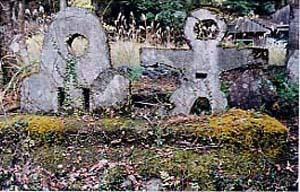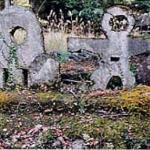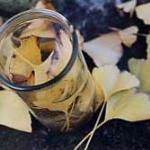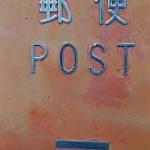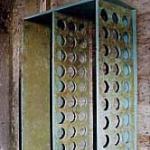Roads Not Taken
We woke up to the sunrise and the shrill caw of morning crows. The plan was to arrive late in the afternoon and we gave ourselves plenty of daylight hours ahead on the open road. It would be wise to catch a glimpse of the famous gorge at Takachiho long before the droves of autumn leaf hunters clogged its historic trails.
The Japan Automobile Association map, now spread across half of the dashboard, marked in bold navy-blue ink that Highway 265 cut right through the heart of the Kyushu Highlands. There wasn't a single city to be found as I ran a finger over the creases between Miyakonojo, not far from the Pacific Coast, and our target deep in the northern mountains. There were, however, many little towns and mountain villages along the way, dotting the side roads that branched off from the main highway.
The last of the flat highlands left us just north of the stout and characterless city of Miyakonojo, and from there we met a steady incline in the road that would lead us to the vineyards of Aya. A wine festival had drawn hoards of people to its tight, simple streets. Sunshine beamed down through the windshield and our windows were cracked just enough for the subtle sweetness of the cool fall air to fill our lungs.
As the fields and paddocks petered out, the paved way narrowed to one lane of traffic in either direction. The autumn hues laid the perfect backdrop to this, the proverbial day out in the country. We passed blurs of flaming reds from the star-shaped momiji maples, and then the florescent yellows of the revered gingko trees, so bright and abundant in these southern highlands. We pulled off to the side for a moment at a spot where some children gathered, and a weathered road sign promised us a "king gingko tree".
It stood five or six meters across and almost three stories high, with a gang of small children dancing excitedly around it as if it was a float in a Christmas parade, while bell-shaped canary leaves fell upon their heads and over their shoulders. Two well-bundled toddlers scooped up armfuls of the leaves and tossed them in the air towards each other, giggling aloud. Under the canopy of the tree lay a cushion of leaves as thick as a mattress, consolation to the few gray-haired women who minded their grandchildren from a slope overlooking the little playground.
Further up the road yet another sign promised a suspension footbridge over a valley five hundred meters deep, the next distraction from our ultimate goal. From the middle of this impressive although wholly intrusive metal structure, a giant open fan of steel cables, the fifty meters on either side seemed an infinite distance, and the valley below was less comforting still. With our feet planted firmly on the other side, we finally noticed the patchwork that surrounded us and colored the basin, a paint-box smear of bright red, orange and yellow.
There were carloads of people milling about in the immediate area, enough to remind us of the hundreds that must have set off to the more famous gorge ahead. We didn't know it then, but this would be the end of the road for all but a few cars, leaving only a smattering of hunter's pickups and the odd sightseeing couple who looked to have taken a wrong turn somewhere along the way.
As we met a fork in the road where the map marked our narrow arm joining with Highway 265, we saw that there wasn't any alpine highway, no simple way of cutting through the last two hundred kilometers. At first we wondered aloud if we hadn't made some mistake, or that perhaps this small unremarkable road would widen eventually, but our hopes were to be proven wrong. Only minutes ahead we began to see rusty highway markers sitting up like headstones every few hundred meters, testament to the fact that Highway 265 was from that point onward a single-lane, unkempt, and nearly abandoned road. After the first half-hour of plodding over the winding, peak and valley motorway, the decision was clear: either turn back now and consider starting again the next day, or inch forward and hope to reach our destination before sundown. In the midst of a long weekend with time to spare and the better part of a tank of gas at our disposal, we pushed on, hugging the left side of the narrow lane as best we could and hoping for some part of the reward.
We would see only eight cars over the next five hours of steady driving, a lonely feat that must not have been more than a few times in the history of Japanese motoring. We were, however, about to make one of the most unique and captivating discoveries of my three-year stay in southern Japan.
We continued along at a hair above thirty kilometers an hour, swaying like a pendulum as we responded to the tight left and right banking turns until the road straightened out for a moment and climbed up to a steep mountain pass. From the highest vantage point I had expected to see a number of towns and crisscrossing roads in the valley below. Instead, what opened up all around us was an unpopulated punchbowl of evergreen forest, glazed over with a thin layer of incandescent fog. Until today, I hadn't believed this kind of place existed in Japan.
The road was paved but had pockets of gravel and other muddy sediment all across it. From time to time a branch half-blocking the way or a trickle of stream forced our attention to the road momentarily, away from the daydream of the drive. Apart from the aerial gymnastics of the odd dipping and diving bird, there weren't any signs of life to be seen, not so much as a discarded wrapper or even an old bottle by the roadside.
We met oncoming cars on the average of one every half an hour. The first two were almost identical hunters in tiny white flatbed trucks, Japanese Elmer Fudds complete with rifles in the gun rack and chopped wood stacked in the back. Although the road was wider at some points than others, we inevitably met the oncoming vehicles at a place where it would be impossible to let them pass. If we noticed their approach first, as we usually did with a startle, we put our car into reverse until we found a sturdy enough looking grass shoulder. There we would begin the theatrics of inching past each other before continuing along the road.
At one point the rough drive ran parallel to a shallow river to our right, not ten meters across. We glimpsed what looked at first glance to be an old inn or perhaps some abandoned forestry building hidden amongst the thick brush. The building was blackened with decay and was in a considerable state of ruins. The single story was topped with a decrepit, incontinent-looking roof and as we curved around the road we saw that there were a few other smaller buildings running next to it along the grassy bank of the clear, mountain fed river. There was more than a bit of mystery about it all since we hadn't seen a building of any sort, not so much as a shack, for the last two hours of steady driving.
Another twenty meters up the road there was a small stone bridge without rails that lead over the rushing water and towards the abandoned buildings. We pulled over just to the left of the road, where there was for the first time enough space for a car or two parked end to end. Out of habit I looked both ways before crossing the ancient roadway, and my girlfriend laughed at this simple, senseless gesture. At the immediate opposite end of the bridge, a bridge that might have once supported the weight of a single vehicle, there was a sign two meters high off the ground, the face of which was rusted right through in ruddy, coin-sized patches. The thick Chinese brushstrokes were archaic and not often seen anymore, difficult to read for even a Japanese. Mizuho couldn't quite put together the characters into anything pronounceable. From this vantage point the buildings looked more like old school grounds than any sort of industrial shell.
While wading through the overgrown pathway towards the old complex, there was a stone monument off to one side unlike any I had seen before. Not to be mistaken for the Buddhist monoliths that sometimes guarded the entranceway to buildings, this was a pair of primitive looking, almost humanoid figures not even a meter high and imbedded in the ground, tiny statues that seemed better fit for Easter Island or some Andean excavation, not sitting by the roadside in rural Japan. I stood alone in front of the stones for what seemed like a few minutes while the sunlight occasionally broke through the clouds to light the otherwise darkened afternoon. The breeze was cooler here than it was earlier in the day, chilly enough for me to turn the collar up on my jacket and stuff my hands into the deep pockets. A crow cawed directly overhead, and the echoes bouncing through the valley transformed eerily to the sounds of children running through a playground. I was conscious of my solitary presence; Mizuho had disappeared, and despite my general concern, something drew me nearer to the remains of the buildings.
An old washhouse was within view, low stagnant urinals to the left and mossy squat toilets to the right with creaking doors left ajar. The area was open air on either end and covered with an a-frame roof so low that I had to take care not to knock my head on the solid frame. The floorboards were cracked and even pushed right through to the earthen ground in places, and I stepped around them to investigate further.
Mizuho joined me again, wondering about the wait and reminding me of the hour. We crept around together for a while longer, exploring what must have been classrooms, so small that they couldn't have held more than ten students at a time. Uncovered windows, some with shark-toothed panes of broken glass, covered one side of the wall, and it felt at times like we were being watched. On one of the walls hung an old paper fish, a single faded crimson and buttercup-colored carp that looked left behind from a closing day now decades past. A half-dismantled black and white television sat in the corner next to a dusty arithmetic textbook, and cobwebs were strung like streamers from the water-stained ceiling right out into the shadows of the rotting hallway. The air here was as musty and as thick as a cellar. A small barren field, only twenty meters across, spread out from an open doorway, and you could almost picture the mops of children's hair bobbing through the tall wild grass along the riverside. Outside, an adjacent administrative building was boarded at the windows, never to be unlocked again.
On one of the outside walls facing the silent road was posted a laminated letter that read, in part, "This property owned by Mr. Ishikawa, Ueno-town. No trespassing for any reason." The school looked to have been abandoned in the late sixties or early seventies but it was hard to tell without a date or even a single soul to explain its history. But the biggest unanswered question, the hardest thing of all to imagine, was who exactly would have attended this tiny fairytale school in the first place, since we hadn't seen even the ruins of a house for hours along the solitary road?
Back in the car, it didn't take long to discover where all the students must have come from. At first, there were only two shack-like buildings, and then more and more abandoned dwellings appeared as if out of a dream until there were a couple dozen, enough to form a little village at least. A lonely intersection was marked by a giant flint-like Buddhist stone- the only clue that this was indeed Japan at all and not some boom-to-bust industry town in the backwoods of North America. The buildings weren't temporary, like those of a purpose-built camp, but they weren't nearly as sturdy as the average Japanese house either. Many of the wood-plank houses were covered in weathered paints of pastel blues and reds and boarded up carelessly at the windows, as if transplanted from an Atlantic fishing cove, another place in another time.
Padlocks were visible bracing a few of the doors and there were a surprising number of useful-looking belongings strewn all around the close-fitting properties. Here and there were snapshots of a simple working life: old bicycles with granny baskets, parts of a rusted motor, a stack of lumber and a pile of old pipefitting. The town looked to have been abandoned overnight, as if the residents woke up in the shadow of an erupting volcano or a dam that was about to burst its banks, and would be back before long to reclaim their land. Perhaps they would, but for the moment at least there wasn't so much as a dry gasp of life left in this old town.
The progressing hour and the uneasy mood meant that we pressed ahead, putting the untold tale behind us. From time to time we saw the odd shack set back from the road, away from the main trail, but no more than ten in total over the next hour and a half. Eventually, after a second mountain pass, we dropped down into an inhabited valley where a small village sat in the shadows of the late afternoon. Every second or third house was boarded-up, but there were a handful of old homes still smoking with life from iron chimneys. A few startled old faces slowly emerged from behind the houses and above the fields, faces of the few that stood firm in these desolate hills, with roots stronger than the lure of modern conveniences, people hanging on by their fingernails to a way of life on the very edge of extinction.
"How far to Takachiho?" We asked one of the friendlier looking women from our car window. "Half a day if they weather holds," she said, sullen and stony faced under a wide brimmed straw hat, as if foreigners came down from the lost hills any day of the week.
Another half-hour put us at the base of a vast hydro project, plugged up at one end by an enormous dam, with a little town clutching the side of the adjacent mountainside. Shiiba was our last chance to eat and scrounge for a bed before the falling sunset would be replaced with complete darkness. A middle-aged innkeeper with a scarlet headband and the smile of an old friend agreed to take us in despite what he described as the unusual circumstances of us not having made a reservation in advance. And although his kitchen had closed for the night, he was kind enough to find a shop in town where we could scrape together a meal of noodles and rice balls.
"Lost, are you?" he asked as we stepped back in after dinner, peering at us over a newspaper and through reading glasses perched just at the end of his nose.
"Not exactly, but kind of, I mean we know where we are going but we were just a little surprised that..."
"...surprised that it would take so long, I bet," he interrupted, "but I imagine you probably got wrapped up in the whole thing, what with the abandoned towns and that old road. City people usually do."
"That's right. Exactly right, in fact."
"Happens from time to time. It was a pretty important route back in the day. Traders used it while traveling between the castles until the Meiji times." He was vague when we asked what happened to that old town in the hills, "It must have started back when they were first running out of trees to cut down, but nobody around here seems to know much about it anymore. People say that the town was like a mountain stream that just dried up one summer. That's not the only town either. Dozens just like it. Vanished. Forgotten." He paused for a moment to tighten his headband a little. "American?" he asked with a single raised eyebrow.
"Canadian, actually."
"Oh well, that's good anyways, don't care much for Americans to be honest." He paused for a moment to light a short cigarette with the sudden flash of a wooden match, "My daughter's dating one, and I guess that's most of the reason, in case you might like to know."
"Here, do you mean?" I asked with open-mouthed surprise.
"No, of course not here. I mean, just look at this place. In New York."
His oldest daughter, against all odds, had escaped not to a bigger city in Kyushu, not to Osaka or Tokyo even, a task in itself, but to the grandest of them all, the Big Apple. Mizuho shook her head in disbelief as he laid a single photo of the unlikely couple out on the counter.
It was enough of the unexpected for one day, we decided, so after draining two mugs of Kirin beer over the innkeeper's demonstration of taiko, and after mingling with the four other guests for a short time, we dragged ourselves down the hall to our comfortable beds and a good-night's sleep.
We managed to find Takachiho Gorge the next day after another lengthy morning drive over hills only slightly more populated than we had met the day before. It was overcrowded and marketed to death, a Japanese Niagara, with the fall colors as spent as those of an overworked eight-millimeter film in an old drive-in theater. Before long we grew bored, and after snapping a few postcard pictures we drove back south again, this time by the more direct coastal highway, with images of ghost towns and mountain people filling our thoughts.
* * * * *
 ThingsAsian
ThingsAsian